
HELSINKI'S LUTHERAN CATHEDRAL
. Helsinki, Finland 7"
x 9" x 5.5"
tall
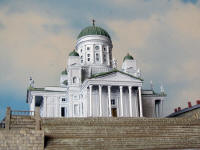 |
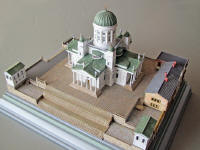 |
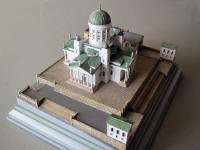 |
| Cathedral Details | ||
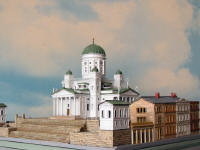 |
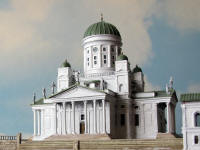 |
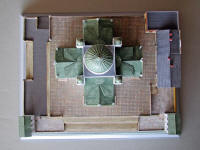 |

HELSINKI'S LUTHERAN CATHEDRAL
. Helsinki, Finland 7"
x 9" x 5.5"
tall
 |
 |
 |
| Cathedral Details | ||
 |
 |
 |
|
If you had to pick just one building to symbolize Finland, it would be a beautiful edifice that shows up in every guidebook and every tourist's photo album - The Lutheran Cathedral in Helsinki. Overlooking Senate Square and the harbor, the church's towers and dome dominate the skyline and will not be dismissed. The Neoclassical church was built from 1830-1852 as a tribute to the Grand Duke of Finland, Tsar Nicholas I of Russia. It was known as St. Nicholas' Church until the independence of Finland in 1917. Since then it has been known as Helsinki Cathedral. It was designed by Carl Ludwig Engel as the centerpiece of Helsinki's Senate Square. It's plan is a Greek cross - symmetrical in each of the four directions, each featuring a colonnade and pediment. The grand stairs were actually suggested by Tsar Nicholas. Engel was totally against it, but gave in. Today they represent the crowing glory of the total design. At the base of the main stairs, is Senate Square, surrounded by impressive government buildings. Engel died before finishing the building and his successor was Ernst Lohrmann, who added four small towers and domes to emphasize the architectural connection to the cathedral's model, Saint Isaac's Cathedral in St. Petersburg. He also erected two identical free-standing buildings - one is a chapel and the other is a bell tower. Lohrmann added the zinc statues of the twelve apostles on the roof, which are thought to be the weakest part of the total design. They just don't seem to belong. Lohrmann completed the church in 1852. It has been a cathedral since 1959. Today, Helsinki Cathedral is one of the city's most popular tourist attractions. =<><><>= |
| CLOSE THIS PAGE |